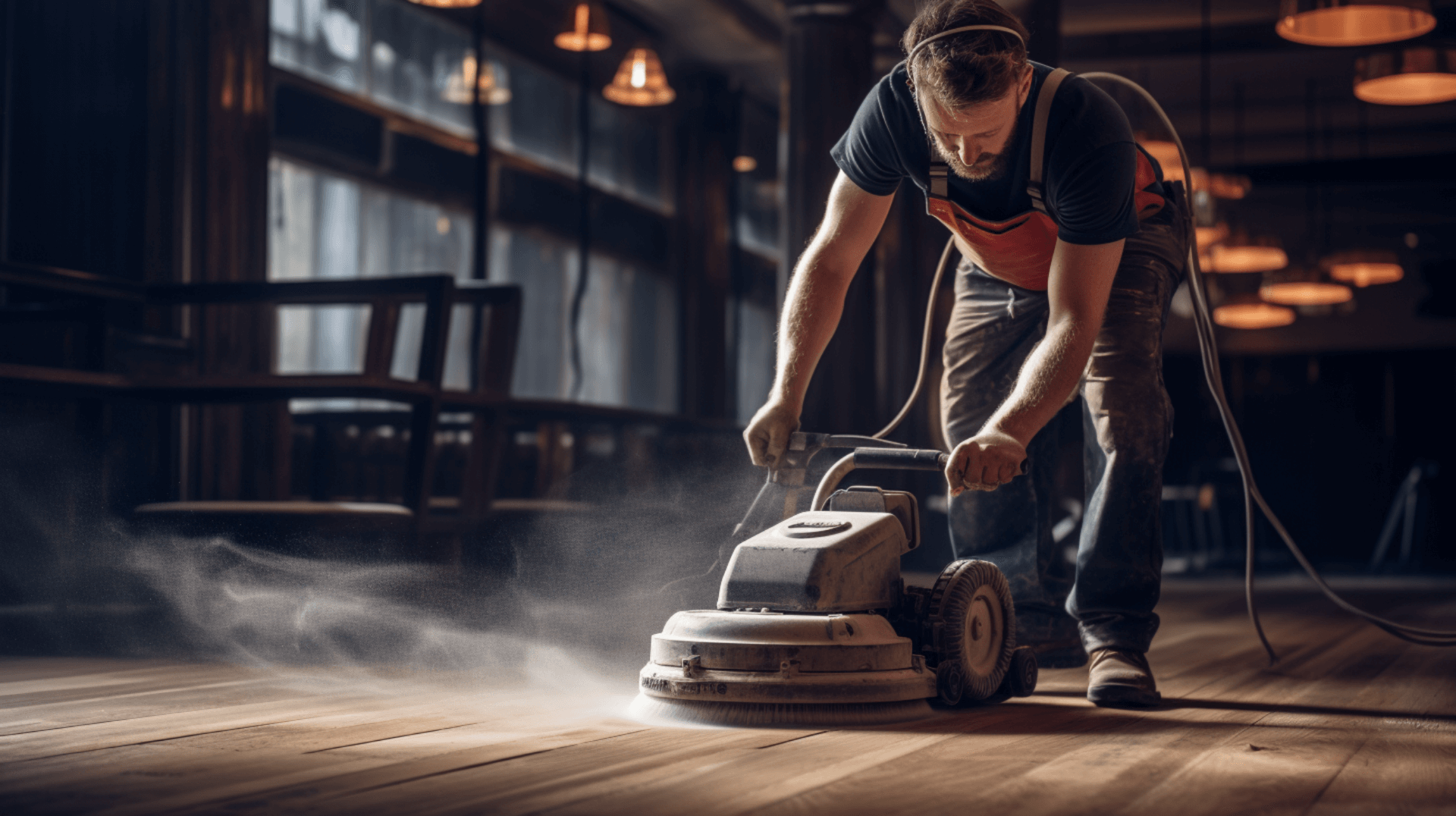Unlock the Potential of Your Wooden Floors with London’s Best Sanding Services
Wooden floor sanding is a process of restoring the natural beauty of wood floors by removing scratches, stains, and imperfections. GJP Floor Sanding is the best choice for this service in London due to our 20 years of experience and commitment to customer satisfaction. We use the latest sanding machines and techniques, taking into account factors such as cross-ventilation and addressing gaps to prevent heat loss and draughts.
Sanding can unlock the potential of your wooden floors by enhancing our aesthetic appeal and increasing the value of your property. It can also save you money on future repairs or replacement by removing worn layers of wood that are more susceptible to damage. Additionally, GJP Floor Sanding considers the effects of temperature and humidity on wood floor performance and provides advice on furniture glides and area rugs to protect the floor.
With our attention to detail and expertise, GJP Floor Sanding ensures that your wooden floors are restored to our original beauty. We prioritize customer satisfaction and provide a range of services to meet your specific needs. Contact GJP Floor Sanding today to unlock the full potential of your wooden floors.
The Science Behind Wooden Floor Sanding
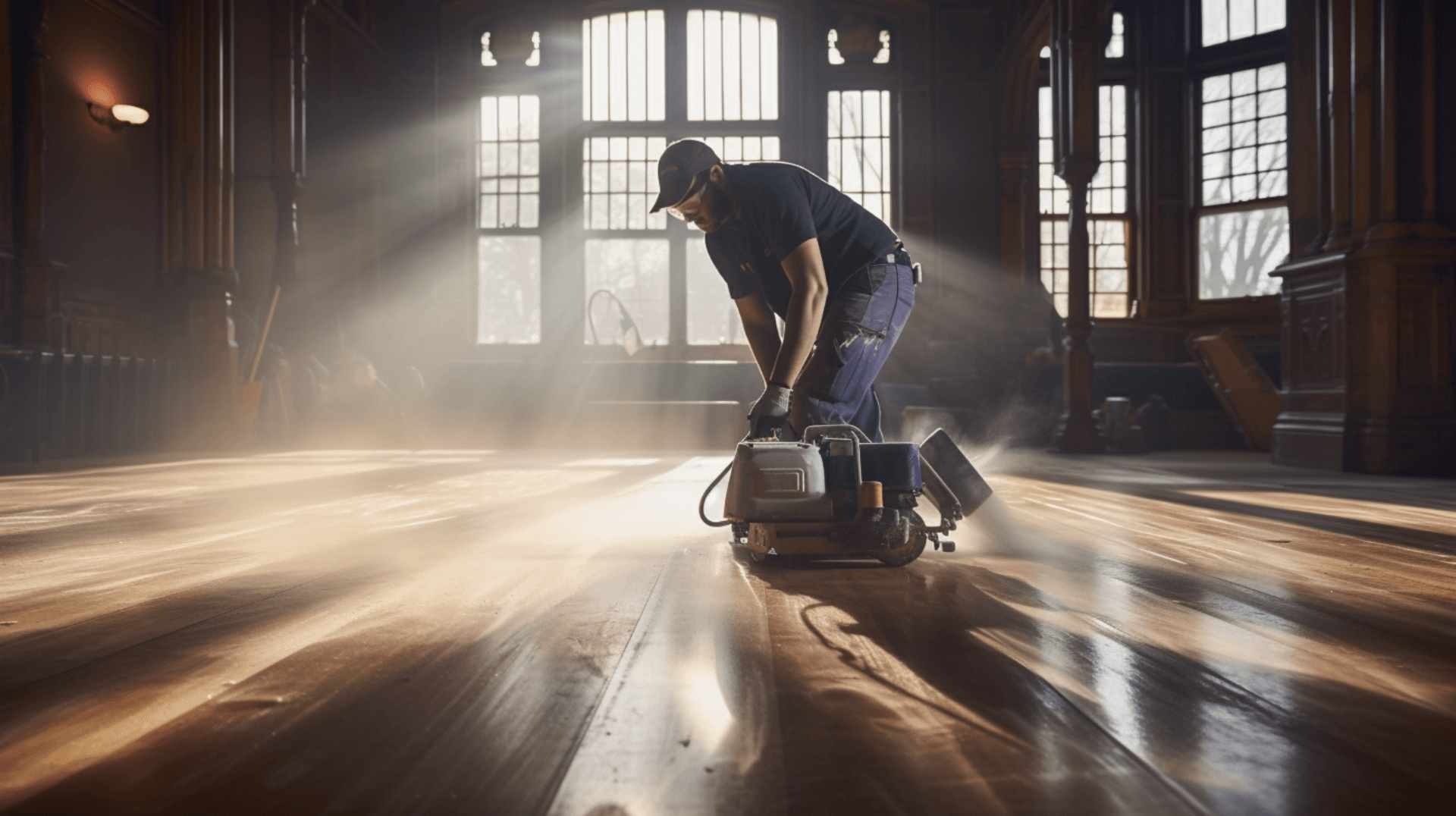
Wooden floor sanding is a science-based process that involves removing scratches, stains, and imperfections to restore the natural beauty of wood floors. The process improves the appearance and longevity of the floors by eliminating worn layers of wood that are more susceptible to damage. It also helps protect the floor from dirt and debris, reducing the risk of slips and falls.
There are different types of wooden floor sanding techniques, including full sanding, partial sanding, spot sanding, and finishing. Full sanding involves sanding the entire floor to remove all scratches and imperfections. Partial sanding targets deep scratches and stains, while spot sanding focuses on small areas of damage. Finishing is the final step, where a protective coating is applied to the floor.
GJP Floor Sanding utilizes the latest sanding machines and techniques to achieve a high-quality finish. We consider factors such as cross-ventilation for suspended timber ground floors and addressing gaps between floorboards and the floor perimeter to prevent heat loss and draughts. We also take into account the effects of temperature and relative humidity on wood floor performance.
Overall, wooden floor sanding is a science-based process that requires expertise to achieve optimal results. GJP Floor Sanding’s attention to detail and commitment to quality make us the ideal choice for homeowners and business owners looking to restore the beauty of our wooden floors.
Assessing Your Wooden Floor’s Suitability for Sanding
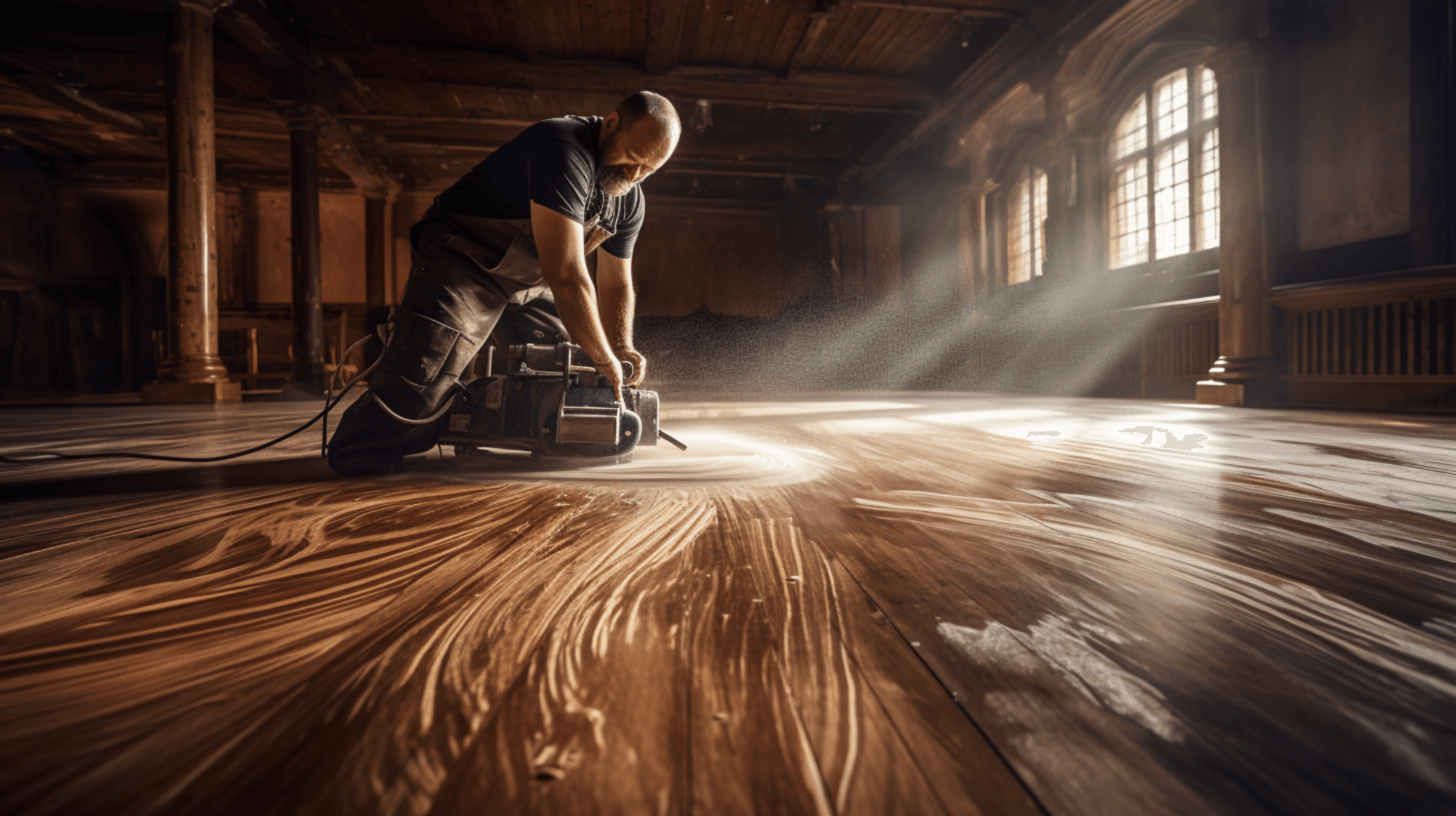
Assessing your wooden floor’s suitability for sanding is an important step in the process. Before deciding to sand your wooden floor, there are several factors to consider. it is important to determine the type of wood used in the floor. Different types of wood require different sanding techniques and finishes. it is important to check the condition of the floor. If the floor is severely damaged, it may not be suitable for sanding. Signs that your wooden floor needs sanding include deep scratches, discoloration, warping, dirt and debris, unevenness, and gaps between the boards.
It is also important to consider the age of the floor, the type of finish used, and the environment in which the floor is located. Older floors may need to be sanded more often than newer floors, and floors with a wax or oil-based finish may need to be sanded more often than a polyurethane finish. Additionally, timber floors can suffer from unwanted air infiltration (draughts) and have inadequate floor insulation, which can lead to higher energy bills and poor thermal comfort. Installing underfloor insulation correctly can address both these problems.
By taking into account all these factors, homeowners and business owners can make an informed decision about whether our wooden floor is suitable for sanding. It is recommended to consult professionals like GJP Floor Sanding for expert advice and guidance tailored to your specific needs.
Preparing Your Wooden Floor for Sanding
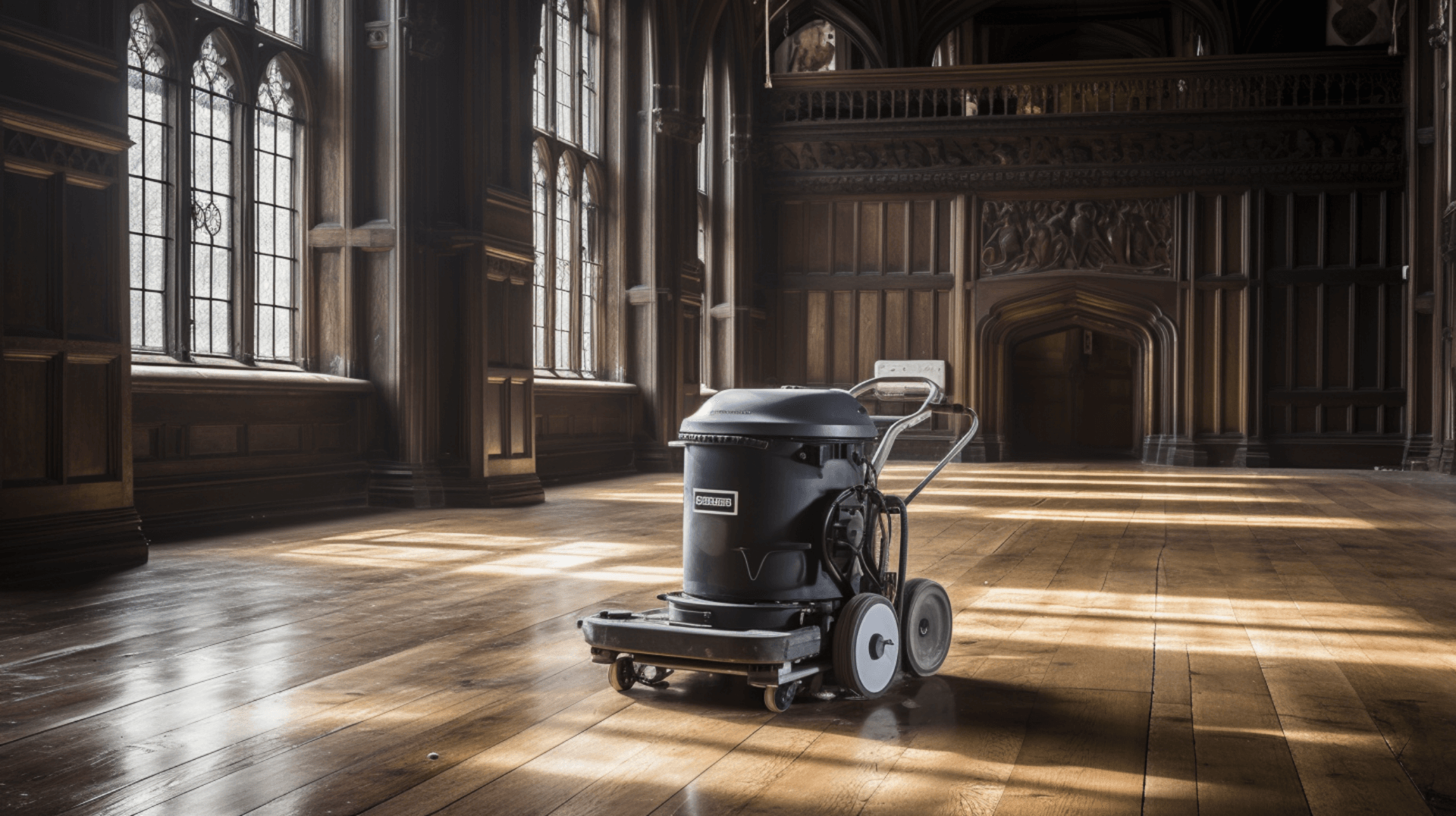
To prepare your wooden floor for sanding, it is important to take several steps to ensure the process is thorough and efficient. GJP Floor Sanding follows these steps to provide the best results:
- Remove furniture and other items: GJP Floor Sanding recommends removing all furniture and other items from the room to create a safe and unobstructed working space. This allows the sanding machine to move freely and ensures the job is completed quickly and safely.
- Scan the floor: GJP Floor Sanding uses appropriate equipment to scan the floor and identify the location of electric cables and pipework. This helps to avoid any potential damage during the sanding process.
- Consider ventilation and gaps: GJP Floor Sanding takes into account factors such as cross-ventilation for suspended timber ground floors and addresses gaps between floorboards and the floor perimeter to prevent heat loss and draughts.
- Dust extraction systems: GJP Floor Sanding prioritizes safety by using dust extraction systems to minimize airborne dust. This not only ensures a cleaner working environment but also reduces the risk of respiratory issues for the installers.
- Fire resistance and safety considerations: GJP Floor Sanding ensures adequate fire resistance and fire stopping is provided by floors between homes and at penetrations. We also separate or shield the product from any heat-emitting appliances, fireplaces, chimneys, or flue pipes passing through the floor.
By following these steps, GJP Floor Sanding ensures that the preparation process is thorough and efficient, setting the stage for a successful sanding job.
The Sanding Process: Techniques and Equipment
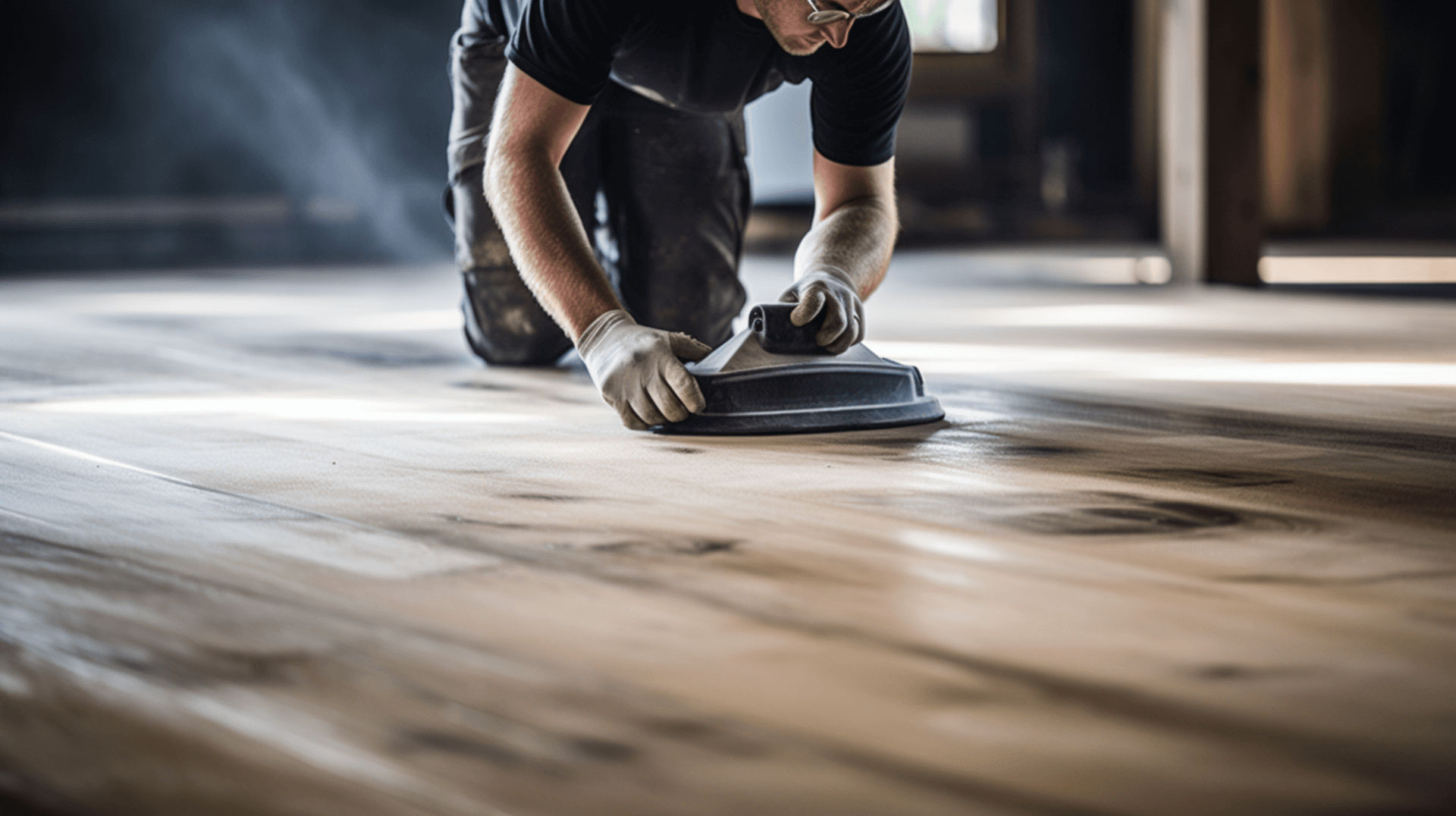
GJP Floor Sanding uses a combination of techniques and equipment to achieve a high-quality finish during the sanding process. We take into account factors such as cross-ventilation for suspended timber ground floors and address gaps between floorboards and the floor perimeter to prevent heat loss and draughts. We also consider the effects of temperature and relative humidity on wood floor performance, as well as color differences in the wood.
To carry out the sanding process, GJP Floor Sanding utilizes a range of sanding machines. We use drum sanders and belt sanders to remove the top surfaces of the wooden floor, with drum sanders being more powerful and effective in removing material. Edging sanders and buffers are used to reach areas that the larger machines cannot access, such as edges, corners, and for the final sanding steps to achieve a smooth and flawless finish.
The choice of equipment and technique significantly affects the final result. By using the appropriate machines and techniques, GJP Floor Sanding ensures that the sanding process is thorough and efficient, resulting in a high-quality finish that enhances the beauty and longevity of wooden floors. We prioritize factors such as cross-ventilation, gap filling, and addressing heat loss and draughts to ensure the floor performs well in different environmental conditions.
Understanding the Role of Grit Sequence in Wooden Floor Sanding
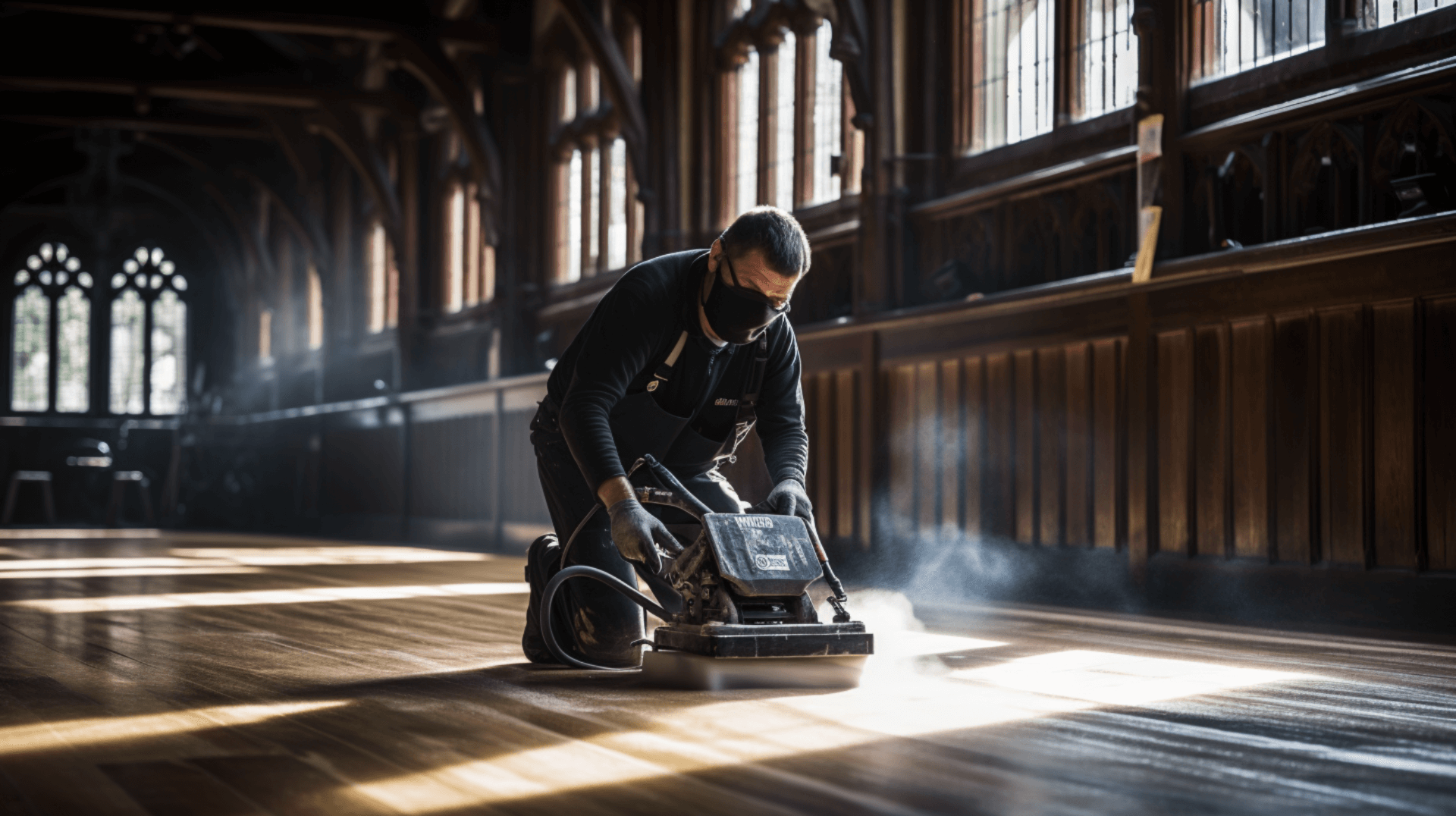
Understanding the Role of Grit Sequence in Wooden Floor Sanding
Grit sequence is an important factor in wooden floor sanding as it determines the level of finish achieved. Grit sequence refers to the order in which different grits of sandpaper are used to sand the floor. Each grit of sandpaper is designed to remove a certain amount of material, and the order in which they are used affects the final result.
GJP Floor Sanding determines the right grit sequence for your wooden floor by taking into account factors such as the type of wood, the condition of the floor, and the desired finish. We use a combination of drum sanders, belt sanders, edging sanders, and buffers to achieve a high-quality finish. Additionally, we consider the type of floor construction, such as suspended timber ground floors, and ensure adequate cross-ventilation is provided by (for example) the removal of bricks, provision of additional external vents, or tapering of the insulation to maintain the original ventilation rate.
The effects of different grit sequences on the final result depend on the type of wood and the desired finish. For example, a coarse grit sequence is used to remove deep scratches and stains, while a finer grit sequence is used to achieve a smooth and even finish. A coarse grit sequence can also be used to level uneven areas of the floor. GJP Floor Sanding’s expertise allows us to determine the appropriate grit sequence that will effectively address the specific needs of your wooden floor.
By understanding the role of grit sequence and utilizing our expertise, GJP Floor Sanding ensures that each wooden floor receives the appropriate sanding treatment to achieve the desired level of finish. We prioritize customer satisfaction and use the latest sanding machines and techniques to deliver high-quality results.
PostSanding: Cleaning and Maintenance
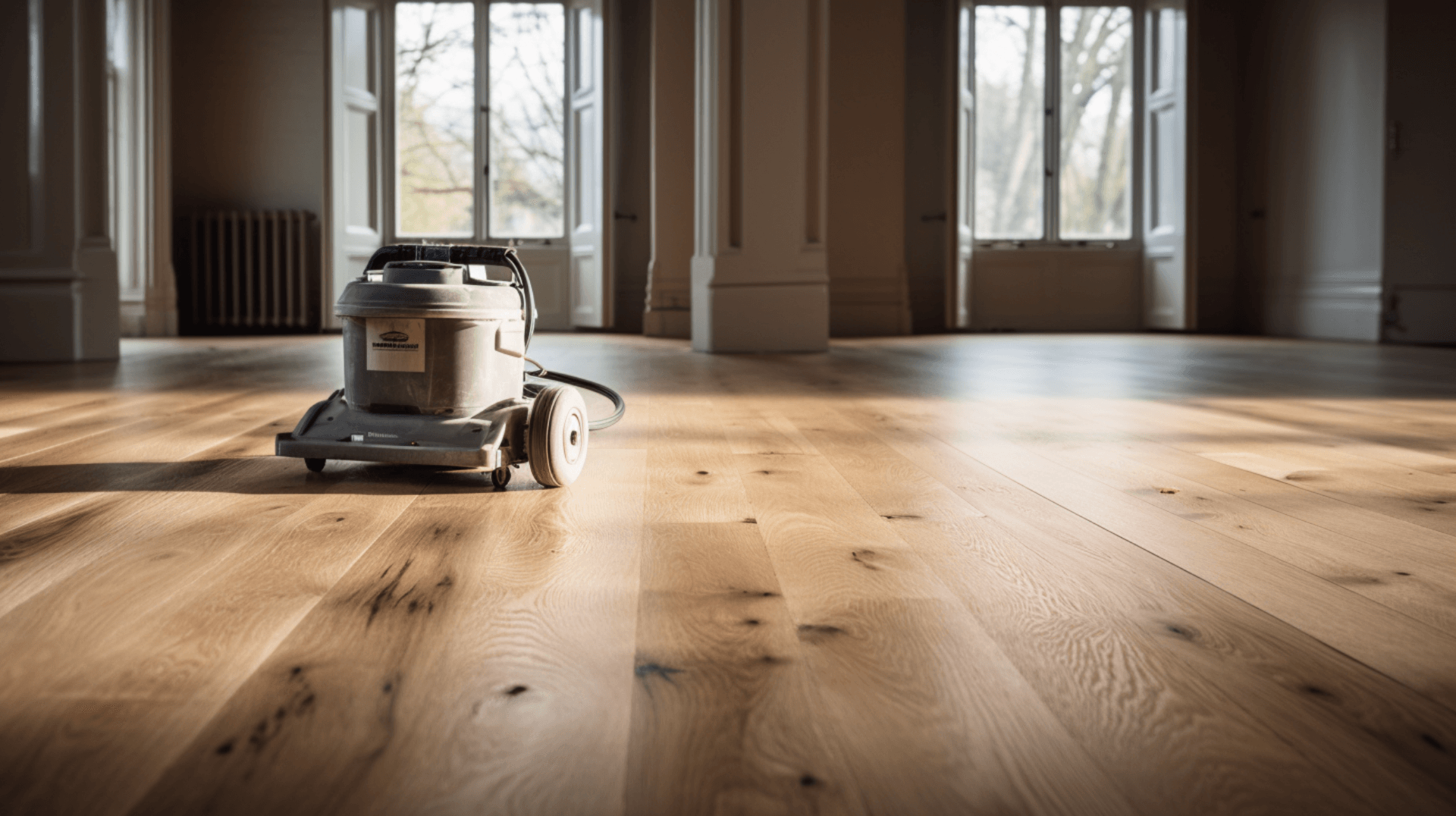
Cleaning and maintaining your wooden floor after sanding is essential to ensure its longevity and beauty. GJP Floor Sanding offers a range of cleaning and maintenance services to help you keep your floor looking its best.
To clean your wooden floor after sanding, it is important to vacuum the floor using a soft brush attachment to remove any dust and debris. This should be done regularly to prevent dirt and dust from accumulating and damaging the floor. Once the floor is vacuumed, it should be wiped down with a damp cloth to remove any remaining dust.
To maintain your wooden floor after sanding, it is important to use the appropriate cleaning products. GJP Floor Sanding recommends using a pH-neutral cleaner specifically designed for wooden floors. This will help to protect the finish and prevent damage to the wood. It is also important to avoid using excessive water when cleaning, as this can cause the wood to swell and warp.
In addition to cleaning, GJP Floor Sanding offers a range of maintenance services to help keep your wooden floor looking its best. These services include regular cleaning and polishing, as well as repairs and refinishing to restore the original beauty of the floor. We also provide advice on furniture glides and area rugs to protect the floor from dirt and debris.
By following these cleaning and maintenance steps and utilizing the services offered by GJP Floor Sanding, you can ensure the longevity and beauty of your wooden floor.
Choosing the Right Finish for Your Sanded Wooden Floor
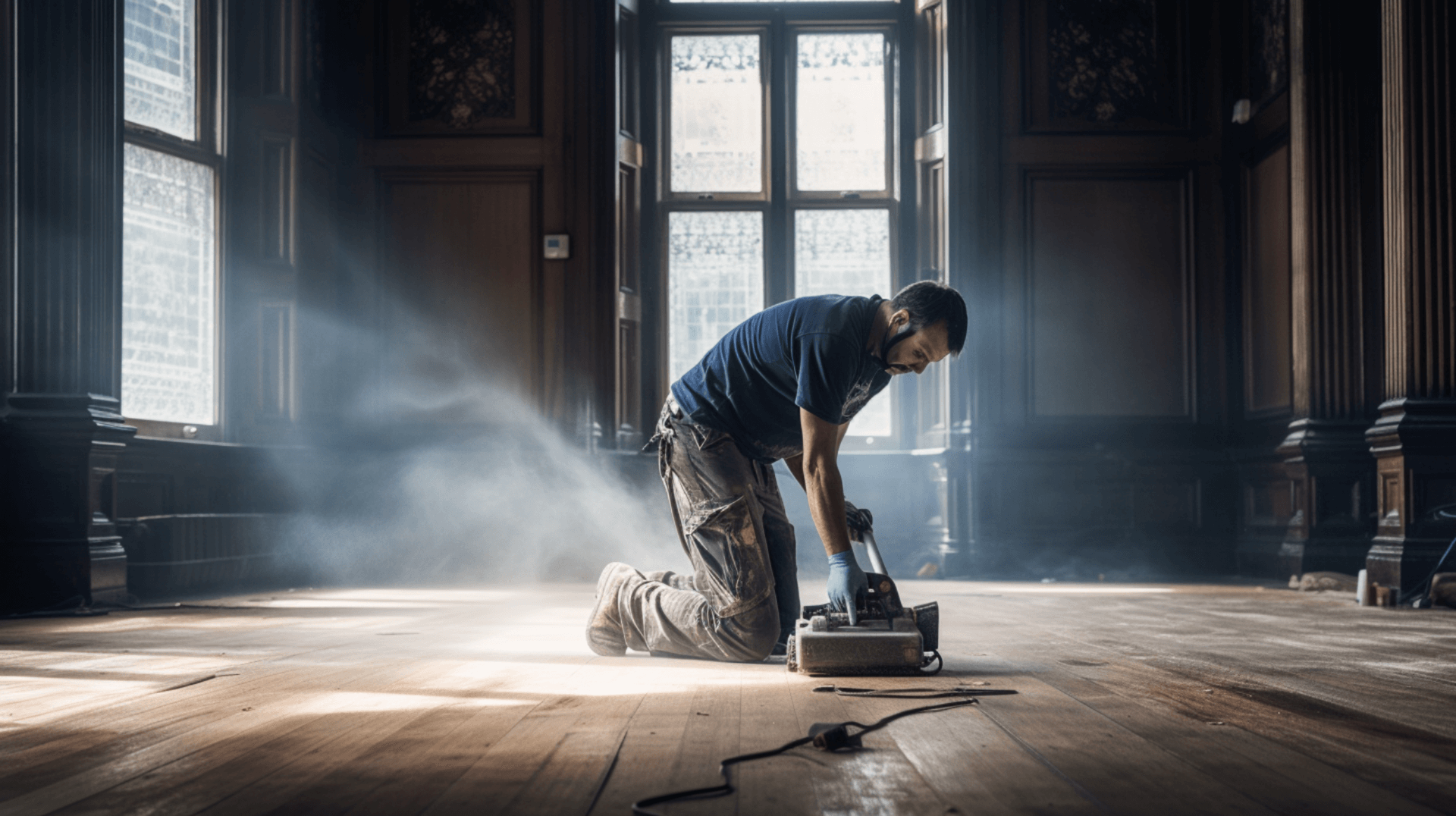
When choosing the right finish for your sanded wooden floor, it is important to consider factors such as the type of wood, the condition of the floor, and the desired look. GJP Floor Sanding can help you choose the best finish for your floor based on these factors. We also consider the type of floor construction, such as suspended timber ground floors, and ensure adequate cross-ventilation is provided.
The most common types of finishes for sanded wooden floors are wax, oil, and polyurethane. Wax finishes provide a natural, matte look and are easy to apply. They offer a low level of protection and require regular maintenance. Oil finishes are more durable than wax and provide a natural, matte look. They offer a higher level of protection and are easier to maintain. Polyurethane finishes are the most durable and provide the highest level of protection. They create a glossy finish that resists scratches and stains.
To choose the right finish for your wooden floor, consider the level of protection and durability you require, as well as the desired aesthetic. GJP Floor Sanding can guide you in selecting the best finish option based on these factors. We also consider the effects of temperature and relative humidity on wood floor performance.
Once the right finish is chosen, GJP Floor Sanding ensures that it is applied evenly and smoothly using the latest equipment and techniques. We provide guidance on proper ventilation and drying time to achieve the best results. With our expertise, GJP Floor Sanding helps you choose and apply the right finish for your sanded wooden floor, ensuring its longevity and enhancing its beauty.
Protecting Your Sanded Wooden Floor from Future Damage
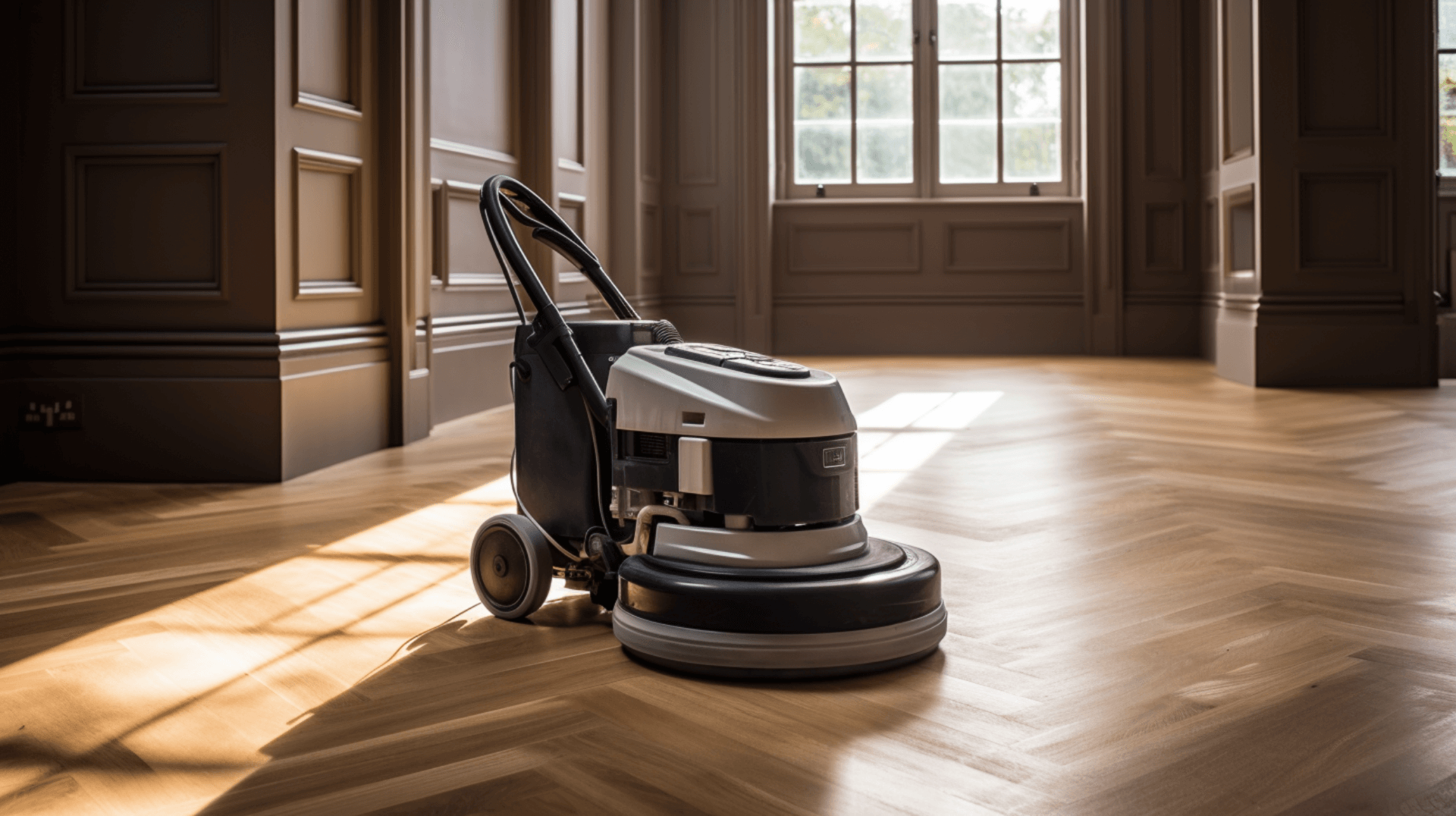
To protect your sanded wooden floor from future damage, it is important to take regular maintenance steps and implement protective measures. GJP Floor Sanding recommends the following steps to ensure the longevity and beauty of your wooden floor:
- Regular Cleaning: Regularly vacuuming your floor with a soft brush attachment helps to remove dirt and debris that can damage the finish. This should be done at least once a week to prevent dirt and dust from accumulating.
- Use the Right Cleaning Products: GJP Floor Sanding recommends using a pH-neutral cleaner specifically designed for wooden floors. This helps to protect the finish and prevent damage to the wood. Avoid using excessive water when cleaning, as it can cause the wood to swell and warp.
- Furniture Glides: Using furniture glides on the legs of your furniture helps to protect the floor from scratches and dents. GJP Floor Sanding recommends using felt pads or rubber glides to reduce the risk of damage.
- Area Rugs: Placing area rugs in high-traffic areas can help to protect the floor from dirt and debris. This prevents excessive wear and tear on the wooden surface.
- Install a Breathable Membrane or lnsupanel: GJP Floor Sanding recommends installing a breathable membrane or lnsupanel (Expanded Polystyrene Panel) rafter system between floor joists to receive the product and ensure that the product does not come into contact with the floor. This helps to prevent moisture buildup and potential damage to the wooden floor.
By following these steps, you can protect your sanded wooden floor from future damage. Regular maintenance, such as vacuuming and using the right cleaning products, helps to keep the floor clean and free from dirt and debris. Additionally, using furniture glides and area rugs provides an extra layer of protection against scratches and dents. Installing a breathable membrane or lnsupanel helps to prevent moisture-related damage. GJP Floor Sanding’s recommendations are tailored to the needs of homeowners and business owners, ensuring that your wooden floor remains in top condition for years to come.
The Cost of Wooden Floor Sanding: An Investment in Your Property

Wooden floor sanding is a worthwhile investment for your property as it can help to restore the beauty and value of your floor. Sanding removes scratches, stains, and other imperfections, and can also help to level out uneven areas. It also provides a protective finish that helps to prevent future damage.
The cost of wooden floor sanding depends on a number of factors, such as the size of the floor, the type of wood, and the desired finish. GJP Floor Sanding takes all of these factors into account when providing a quote, ensuring that you get the best value for your money.
GJP Floor Sanding ensures value for money by using the latest sanding machines and techniques to deliver high-quality results. We prioritize customer satisfaction and use the appropriate grit sequence to achieve the desired level of finish. We also consider the type of floor construction, such as suspended timber ground floors, and ensure adequate cross-ventilation is provided. Additionally, we take into account factors such as fire resistance, heat sources, and potential sources of ignition to ensure the safety of the floor.
By investing in wooden floor sanding, you can significantly improve the look and feel of your property. It not only restores the beauty of your floor but also helps to protect it from future damage, ensuring that it remains in top condition for years to come. GJP Floor Sanding offers competitive pricing and ensures value for money by using the latest techniques and equipment to deliver high-quality results.
Why Choose GJP Floor Sanding: Our Expertise and Commitment

GJP Floor Sanding is a leading wooden floor sanding service in London, known for our expertise and commitment to customer satisfaction. With over 20 years of experience, our team of professionals is highly knowledgeable in all aspects of wooden floor sanding.
What sets GJP Floor Sanding apart from other services is our attention to detail and comprehensive approach. We take into account factors such as fire resistance, heat sources, and potential sources of ignition to ensure the safety of the floor. We also consider the effects of temperature and relative humidity on wood floor performance, as well as the current relevant national building regulations.
GJP Floor Sanding’s commitment to customer satisfaction is evident in our range of services. We provide tailored advice on the best finish for your floor, considering factors such as the type of wood, the condition of the floor, and the desired look. We also offer guidance on proper ventilation and drying time to achieve the best results. Additionally, we are knowledgeable in the best materials and systems to use for insulating suspended timber floors in older traditional buildings.
GJP Floor Sanding has a proven track record of success. We have completed projects for Grade II listed buildings and high-end restaurants, receiving praise for our professionalism, attention to detail, and efficiency. Our use of the latest sanding machines and techniques ensures high-quality results.
Overall, GJP Floor Sanding’s expertise, commitment to customer satisfaction, and successful track record make us the top choice for wooden floor sanding services in London. Homeowners and business owners can trust us to deliver exceptional results and transform our wooden floors.
Contact GJP Floor Sanding: Unlock the Potential of Your Wooden Floors Today
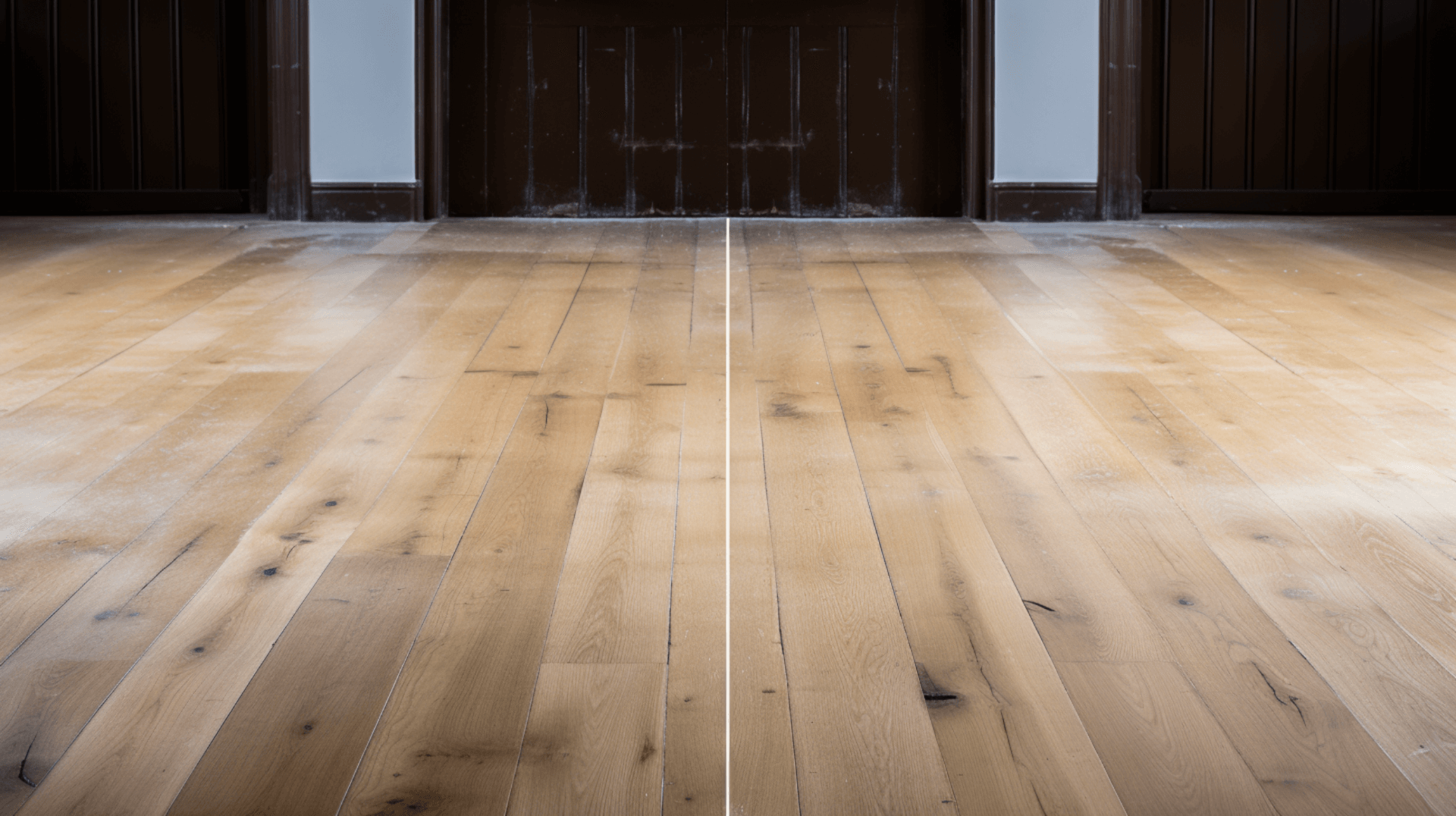
To unlock the potential of your wooden floors, GJP Floor Sanding is the leading choice in London. With over 20 years of experience, our team of professionals is highly knowledgeable in all aspects of wooden floor sanding. We provide tailored advice on the best finish for your floor, considering factors such as the type of wood, the condition of the floor, and the desired look. We also take into account the type of floor construction, such as suspended timber ground floors, and ensure adequate cross-ventilation is provided.
To get in touch with GJP Floor Sanding for a consultation or quote, you can call us on 02036 978 431 or email us at sales@gjpfloorsanding.com. When contacting GJP Floor Sanding, it is important to have the following information ready: the size of the floor, the type of wood, the desired finish, and the type of floor construction.
GJP Floor Sanding ensures value for money by using the latest sanding machines and techniques to deliver high-quality results. We prioritize customer satisfaction and use the appropriate grit sequence to achieve the desired level of finish. We also consider factors such as fire resistance, heat sources, and potential sources of ignition to ensure the safety of the floor.
By choosing GJP Floor Sanding, you can trust that your wooden floors will be transformed to our full potential. Our expertise, commitment to customer satisfaction, and successful track record make us the leading choice for wooden floor sanding services in London. Contact GJP Floor Sanding today to unlock the beauty and longevity of your wooden floors.
